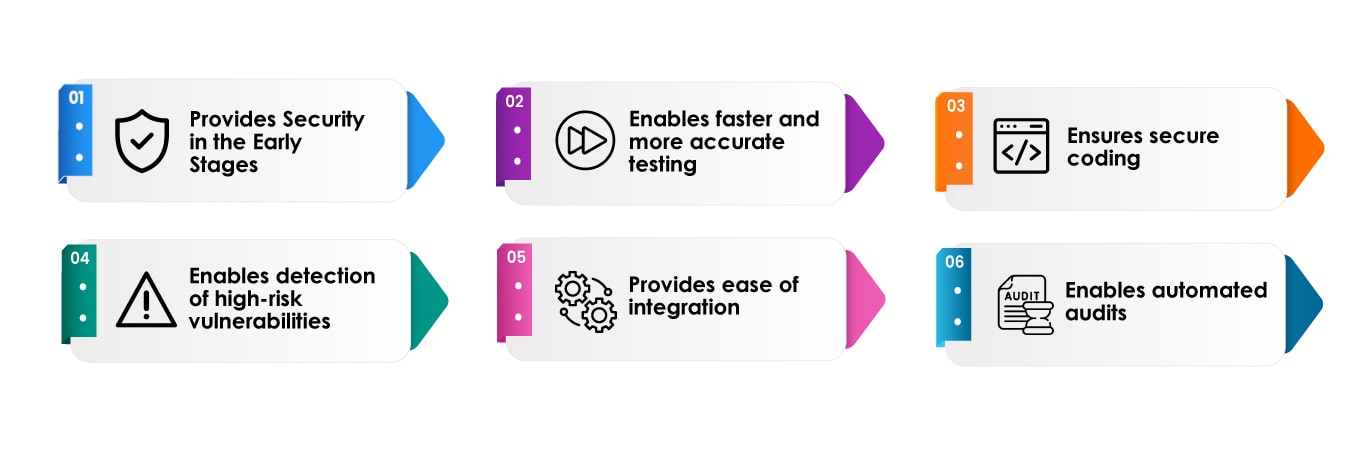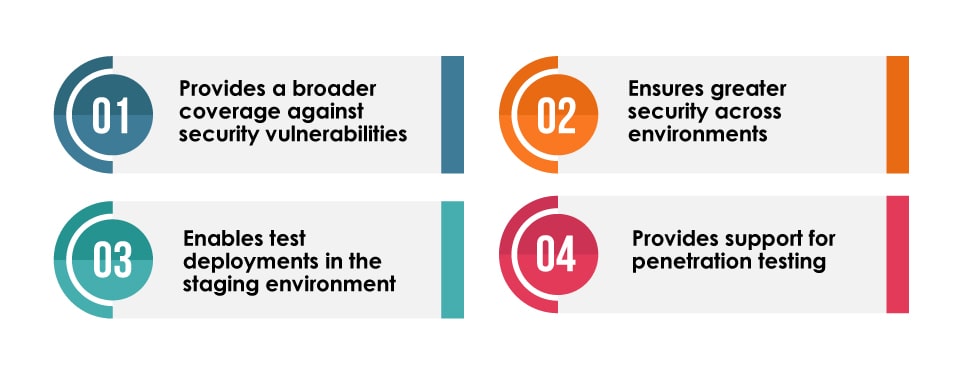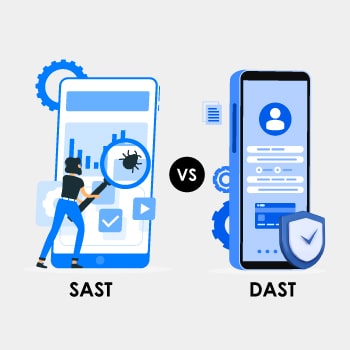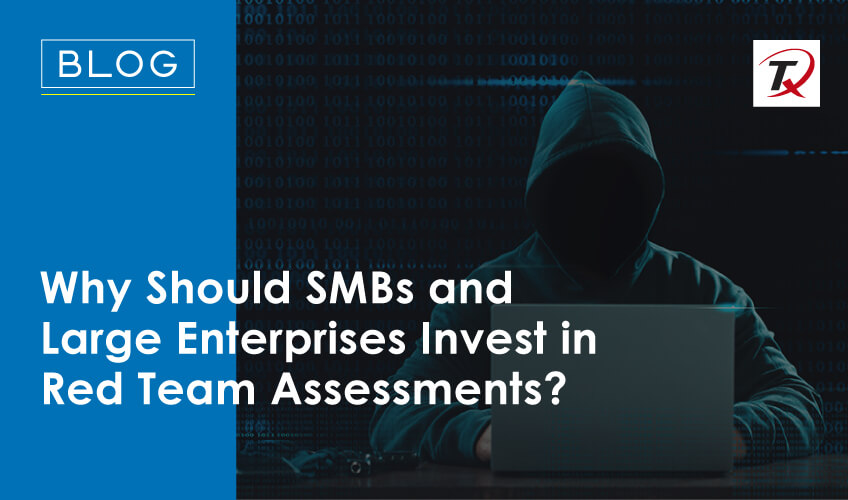
An Overview of SAST

Static application security testing (SAST) analyzes the source code of the application to detect security vulnerabilities. The security vulnerabilities may be in the form of SQL injection, buffer overflows, XML, XXE attacks, hardcoded-credentials, vulnerable libraries and other security risks.
SAST is a white box testing approach in which the application is scanned from the inside out. Testers perform SAST to identify security vulnerabilities in the code before it is compiled or executed.
The SAST methodology enables testers to evaluate the applications early and without the need to execute any functional components. This way, security-related vulnerabilities are found and fixed early, preventing such security issues from going unattended until the later development phases. SAST saves time and effort for teams and enhances app security.
Business Benefits of SAST

Provides Security in the Early Stages:
SAST ensures an application’s security early in its development lifecycle. It enables finding vulnerabilities in the source code during the coding or designing stage, making it easier to fix the bugs early. However, when tests are not performed until the end of development, the build has inherent bugs and errors which take time to fix and delays the timeline.
Enables faster and more accurate testing:
SAST tools scan the application and its source code faster than a manual review. The tools validate and precisely scan millions of code lines in a time-effective manner and precisely detect all underlying issues. In addition, if configured and used correctly in the Dev pipeline, SAST tools continuously monitor the code for security leaks and preserve the code integrity and functionality while suggesting mitigations for the identified problems rapidly.
Ensures secure coding:
Secure coding is mandatory for all kinds of applications, be it for websites, mobile apps, or embedded systems. Creating robust, safe coding from the beginning reduces the risks of getting the application compromised later. The reason is that attackers are able to target poorly coded applications easily and perform cyber-attacks like stealing sensitive data, passwords, account takeovers, etc. It has adverse effects on the organizational reputation and customer trust. Using SAST ensures safe coding practices and regulatory compliance.
Enables detection of high-risk vulnerabilities:
SAST tools make it possible for testers to detect high-risk application vulnerabilities, such as SQL Injections and buffer overflows, etc., throughout the lifecycle. In addition, SAST tools identify cross-site scripting (XSS) and vulnerabilities.
Provides ease of integration:
SAST tools come with simple integration and can be easily embedded into an existing QA process. SAST tools perform security testing within the Dev environments, repositories, and issue trackers. SAST tools feature a user-friendly interface that ensures a reasonable learning curve and consistent testing.
Enables automated audits:
It is a time consuming and tedious task to perform manual security code audits, and the auditor should know of the possible vulnerabilities before they can examine the code thoroughly. However, SAST tools are capable of reviewing code frequently with accuracy and in less time. The tools accelerate code audits and ensure code security more efficiently.
An Overview of DAST

Dynamic application security testing (DAST) evaluates the application by simulating the actions of hackers who may try to sneak into the application. DAST tests the applications in real time and against vulnerability scenarios to detect and report security-related bugs.
DAST can be closed box, also called Black-box, or a grey-box where application functionality is known to the tester. It can also be a white-box where underlying technologies and architecture are also known to the tester. This helps in testing against any insider threats as well. DAST helps testers identify bugs that may not be found during SAST and appear only once the application is tested in runtime.
Business Benefits Of DAST

Provides a broader coverage against security vulnerabilities
Modern applications are complex and are integrated with a wide range of external libraries, legacy systems, extensions, template code, etc. As security risks evolve, such a solution offers businesses broader testing coverage. DAST scans and tests all applications and websites, regardless of their technologies. Therefore, DAST addresses various security concerns while checking how the application appears to attackers and end-users. It helps the testers run a comprehensive QA plan that may find and fix issues and ensure a secure application.
Ensures greater security across environments
Since DAST is not implemented on the underlying code but from the outside, achieving the highest level of security and integrity of the application is possible. Even if updates are made to the application environment, it remains secure and entirely usable.
Enables test deployments in the staging environment
DAST tools and techniques test applications in a staging environment for vulnerabilities. This way, Dev and QA teams are assured of the application security post-production. Teams test the application on a regular basis through DAST tools and use manual techniques to identify any underlying security issues that configuration updates may bring about.
Provides support for penetration testing
The process of DAST resembles that of penetration testing, where the application is verified for vulnerabilities by intentionally injecting malicious input or performing a cyberattack to review how the application responds. Using DAST tools in the penetration testing efforts simplifies the operations through its capabilities. DAST tools help streamline the penetration testing process through automated bug detection and reporting.
SAST vs DAST : 7 Key Differences

| S.no | SAST | DAST |
| 1 | It is a white-box security testing process | This can be black-box, grey-box or white-box |
| 2 | The process of testing flows from the inside out | The process of testing flows from the outside in |
| 3 | QA is aware of the application’s design, implementation, and framework, just like the developer | In the case of black box DAST, QA is not aware of the application’s design, implementation and frameworks, just like a hacker |
| 4 | SAST is implemented on static code and does not require any deployed applications. It is called “static”, as the process scans the static code of the application to evaluate the vulnerabilities | DAST is performed on a running application. It is called “dynamic” as the process tests the application for security vulnerabilities dynamically when it is running. |
| 5 | SAST takes place in the early stages of SDLC. | DAST takes place on a running application and towards the end of SDLC. |
| 6 | SAST helps find the client-side and server-side security issues. The tools are compatible with multiple embedded systems and code but do not find bugs related to environments. | DAST tools detect security issues related to environments in addition to client-side and server-side vulnerabilities, which are not able to be detected just by SAST. This is usually done by analysing application behaviour and responses and requests in an application. |
| 7 | SAST is directly integrated into CI/CD pipelines for regularly monitoring the application code. SAST verifies all stages of the CI process, which includes security analysis of the source code through test automation | DAST is directly integrated into a CI/CD pipeline once the application has been deployed and is running on the test server. |
Conclusion
SAST vs DAST have underlying differences on the ways each method proceeds with security testing. SAST scans the source code of the application at rest and identifies the security loopholes. On the other hand, DAST tests the application that is running. When comparing SAST versus DAST, it is evident that SAST may be deployed earlier in the SDLC when it is relatively easy and cost-effective to fix the detected vulnerabilities and security issues. However, businesses should not rely on a single method to detect security bottlenecks.
A combined approach, which leverages both SAST and DAST, is recommended to enable a broader range of vulnerabilities and exploitable shortcomings. It reaps the benefits of both SAST’s static and DAST’s dynamic approach to end-to-end security testing. Adding other methods of security testing into the process, such as interactive application security testing (IAST) and runtime application self-protection (RASP), further strengthens the overall security testing process of applications.
How Can Tx Help You With Your Security Testing Needs?

TestingXperts (Tx), a next-gen specialist QA & software testing company, has been helping clients with various security testing needs. Our team of Certified Ethical Hackers (CEHs) ensures that your application is secure from vulnerabilities and meets the stated security requirements, such as confidentiality, authorization, authentication, availability, and integrity. Teams have more than ten years of expertise in assessing various applications for security threats and ensuring rigorous application testing for all possible threats and vulnerabilities.
TestingXperts Test Center of Excellence (TCoE) has developed Tx-PEARS –‘A holistic framework for enabling non-functional testing requirements quickly and effectively in one go.’
Tx-PEARS stands for Performance Engineering, Accessibility, Resiliency, & Security – Delivers innovative services in managing Non-Functional Requirements (NFRs) that help customers drive better value for their businesses with scalable and robust solutions enabling great CX.
Benefits for Businesses Leveraging Tx-PEARS
• 80-90% time saved during the planning phase as ready-to-use accelerators embedded in Tx-PEARS framework helps to jumpstart testing engagements.
• Provides scalability and resiliency to applications deployed on the cloud and on-premise.
• Proactively addresses application NFRs and covers both application and infrastructure stack.
• Less code to develop and maintain as accelerators have all the required features for ensuring quicker testing outcomes.
• Helps to analyze application architecture and design to identify potential fault areas and recommend the right design patterns (e.g., circuit breakers, bulkheads, etc.)
• Executes resilience validations to understand application and infrastructure resilience.
• Analyzes monitoring and operational processes and suggest modifications to improve resilience (build self-detecting and self-healing capabilities).
• Provides Application Performance Capacity Management and Production Stability Improvement services in one go.
• Ensures equal access to apps to all people, including people with disabilities like color blindness, moto impairment, mobility impairment, etc.
• Helps to build quality gates from an NFT perspective.
• Helps in enabling an application to be fault-tolerant, reduce latency, and make it load tolerant.
• Ensures business continuity even during sub-system/component failures.
• Helps to cut down QA costs by 40%.
• Save around 55% on Total cost of ownership (TCoE).
Discover more
Get in Touch
Stay Updated
Subscribe for more info




